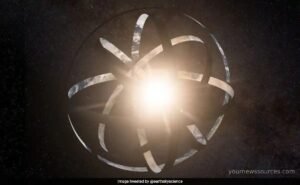
Searching for Life Beyond Earth
The question of whether there are other life forms in the universe has always fascinated humanity. Recently, an international team of researchers from Sweden, India, the US, and the UK developed a new method to search for incredibly complex extraterrestrial megastructures known as Dyson spheres, as reported by Science Alert.
What is a Dyson Sphere?
A Dyson sphere is a theoretical engineering marvel that only highly advanced civilizations could construct. These structures would enable a civilization to capture and utilize all of a star’s energy. To search for these Dyson spheres, or their technological signatures, the team initiated “Project Hephaistos.” Their findings were published in the Monthly Notices of the Royal Academy of Sciences.
Identifying Potential Dyson Spheres
The researchers believe they have identified seven potential Dyson spheres after sifting through millions of space objects. According to scientists, only civilizations that reach Level II on the Kardashev scale could undertake such an ambitious project. However, these candidates require further examination to confirm their nature.
The Origin of the Dyson Sphere Concept
Physicist and astronomer Freeman J. Dyson first proposed the concept of a Dyson sphere in 1960. He envisioned it as a massive shell of objects orbiting a star, which could capture its energy to meet the needs of an advanced technological society.
The Search Process
Analyzing Data
To find the seven potential Dyson spheres, the team analyzed data from the European Space Agency’s Gaia map of stars, the 2MASS infrared astronomical survey, and NASA’s WISE infrared space telescope.
Detecting Infrared Signatures
Matias Suazo of Sweden’s Uppsala University explained that these structures would emit waste heat as mid-infrared radiation, depending on their completion level and effective temperature. The team developed a specialized pipeline to identify sources with unusual infrared excesses that couldn’t be explained by any known natural phenomena.
Filtering Candidates
One challenge is that many natural objects, like nebulae and background galaxies, also emit excess infrared radiation. The team created a pipeline to detect anomalies, focusing on identifying sources with unexplained infrared excesses. They started with about 5 million objects, narrowing them down to 368. After filtering out 328 blends, 29 irregulars, and four nebulae, only seven potential candidates remained.
Conclusion
The researchers concluded that these seven sources are clear mid-infrared emitters without any known contaminants or signatures indicating a natural origin. The discovery of these potential Dyson spheres brings us closer to answering the age-old question of whether we are alone in the universe.